The Buick Envista has already impressed with its cargo capacity here at Luggage Test HQ, managing to fit more than was expected given its 20.6-cubic-foot official measurement and a coupe-like body shape that usually doesn’t portend well for carrying bags. Well, now it’s time to test its mechanical twin, the Chevrolet Trax. It has 25.6 cubic-feet officially and a boxier rear end. That has to mean bigger and better things, right? Right?!?
Well, before we get to that answer, let’s also put that 25.6-cubic-foot number into context for the wider subcompact SUV segment. At present, the class leader is far and away the Ford Bronco Sport in terms of both official volume (32.5) and actual luggage test results. Next up is the Kia Seltos (26.6) and the VW Taos, which has 27.9 cubic-feet with front-wheel drive and 24.9 with all-wheel drive. In theory, the Trax should be able to swallow a comparable amount as those. And if you’re wondering, the somehow-more-expensive Chevrolet Trailblazer has a hair less than the Trax at 25.3 cubic-feet. Spoiler alert, it’s real-world performance underperformed that. OK, now, let’s see what the Trax can do.
Here is the cargo area. At first glance, it’s pretty typical, but before getting to the bags, let’s talk about two key elements that can make a big difference when stuffing in stuff.
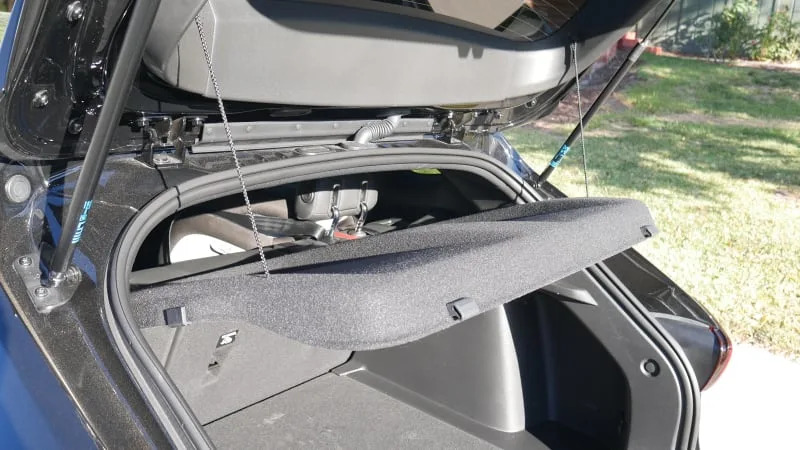
Like the Envista and others in the segment, the Trax is stuck with this huge, rigid, hatchback-style cargo cover. You definitely can’t store this in the car, which means there’s a scenario where you need more space but forget (or didn’t know) to remove the damn cargo cover. This is the dreaded “my friends have too much crap at the airport” scenario.
This proved to be a big-time detriment for the Envista. I could fit only three bags, even when dislodging the cover to sit atop those bags.
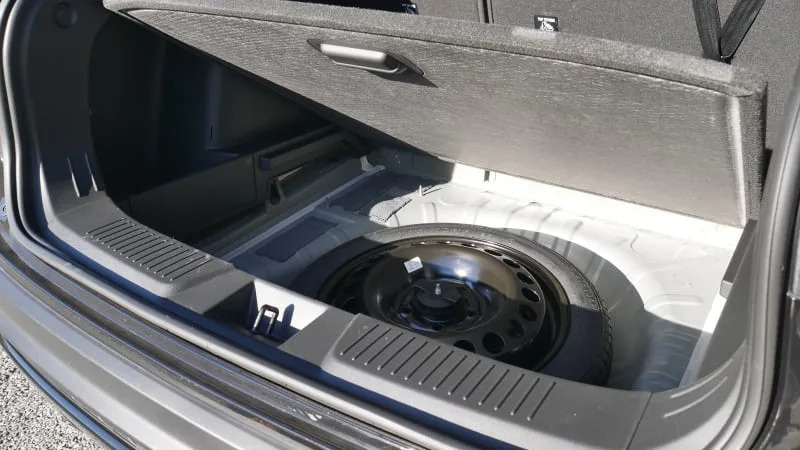
Like the Envista, the Trax also has a lot of underfloor space. The good news: This means it has a spare tire. The bad news: There is no dual-level cargo floor setup as in so many other SUVs, including those in this segment, that allows you to maximize space behind the raised back seat while ensuring the option of a fully flat load floor when that seat is lowered.
As such, the Trax cannot take advantage of this space for the purposes of loading larger items like bags (just like the Envista) and without any sort of foam surround with makeshift bins and such (another commonality), it’s harder to use this for storage. Maybe jumper cables, chains or other stuff that wouldn’t fling around, which isn’t nothing I suppose.
OK, now let’s get to the bags, keeping in mind I will be testing with and without the cargo cover. As with every Luggage Test, I use two midsize roller suitcases that would need to be checked in at the airport (26 inches long, 16 wide, 11 deep), two roll-aboard suitcases that just barely fit in the overhead (24L x 15W x 10D), and one smaller roll-aboard that fits easily (23L x 15W x 10D). I also include my wife’s fancy overnight bag just to spruce things up a bit (21L x 12W x 12D).
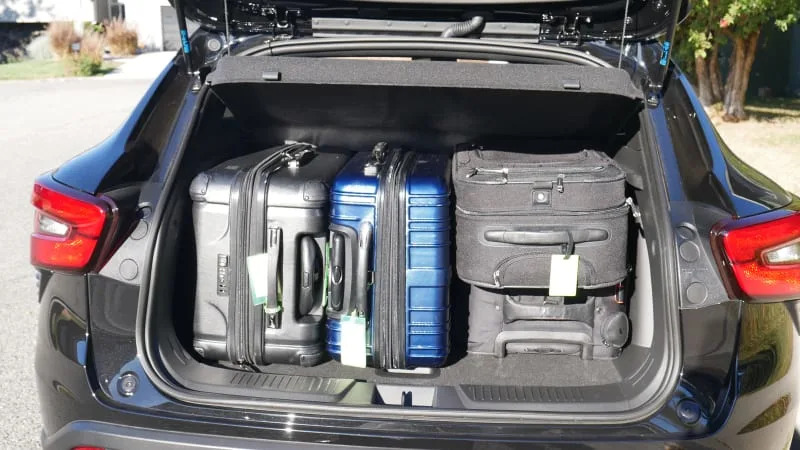
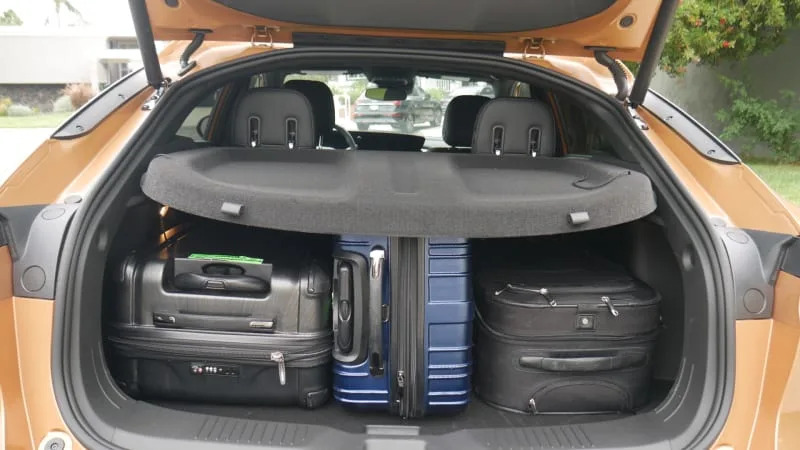
Now here’s a result! That would be the four biggest bags under the Trax’s cargo cover, whereas the Envista could only and just barely fit the two biggest bags and one of the medium ones. The Trax obviously has a taller space between floor and cargo cover/seat back.

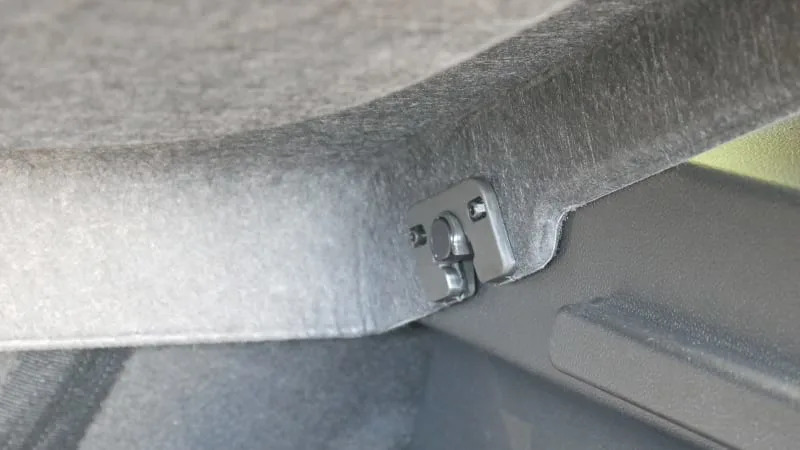
Now, to make this happen, I did need to dislodge the cargo cover’s left-side clasp, but the cover and liftgate it’s attached to still went down. The Envista would not do this when I tried to stuff another bag in and hover the cover on top.
That said, I could fit all but the fancy bag under the Kia Seltos‘ cargo cover (aka one more bag). The VW Taos didn’t provide a cargo cover for me to test with.
OK, now let’s chuck the cover.
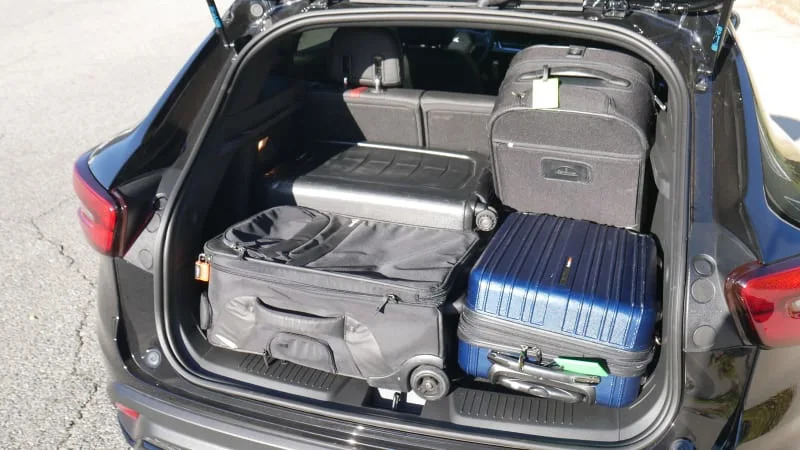
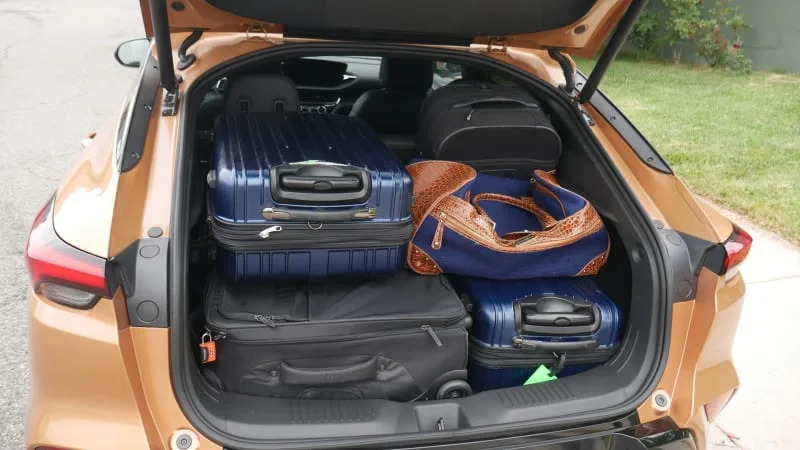
Here is another result! The Trax’s cargo area is clearly not as long as the Envista’s. This would be the exact same Tetris formation (minus the top bags) in both, yet you can see that there’s not enough length in the Trax to make it happen.
OK, but obviously there’s space remaining. Let’s see how, or even if, I can fit all the bags in.
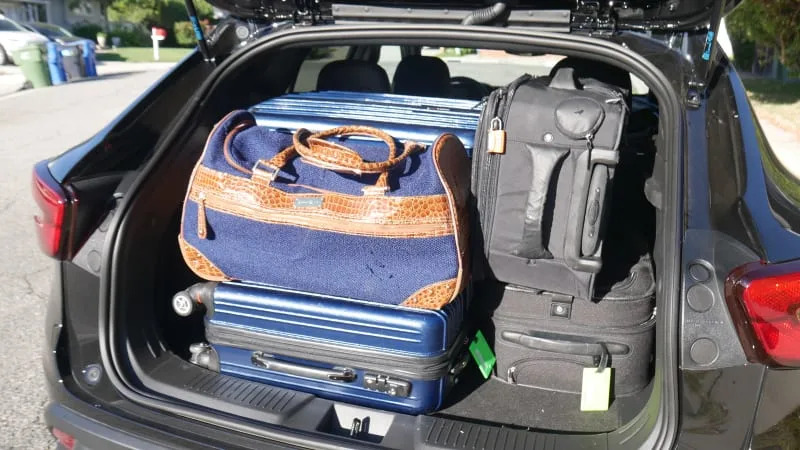
OK, so this was not easy. In fact, I almost gave up thinking it just wasn’t possible. Yes, you can fit all the bags inside, but it sure looks like there’s more space in the Envista, no? Remember, its maximum is shown above.
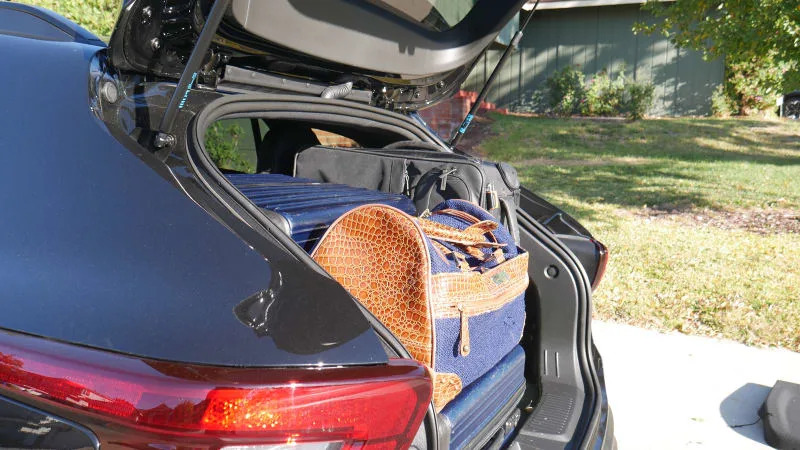
So yes, the Trax is a little bit taller than the Envista, but it still has a pretty steeply raked liftgate, which impedes loading. This is the sideview of the above formation, and somehow the liftgate managed to close around it all. You can really see here how much of a “by the skin of its teeth” this result was.
It should also be noted how close to the roof this formation was, but visibility was still sufficient since the medium bag up top was behind the comparably high head restraint.
The overall conclusion: While the Envista overperformed its official cargo figure, the Trax underperformed its figure. It’s definitely not among those class-best performers. It’s at the top of a tier below them, along with the Envista.
I’m not denying it has more volume than the Envista, but its space just isn’t as useful, or at least no more useful. It is, however, pretty similar to the Trailblazer, which is just one more reason to choose the Trax over its rather lame big(?) brother.
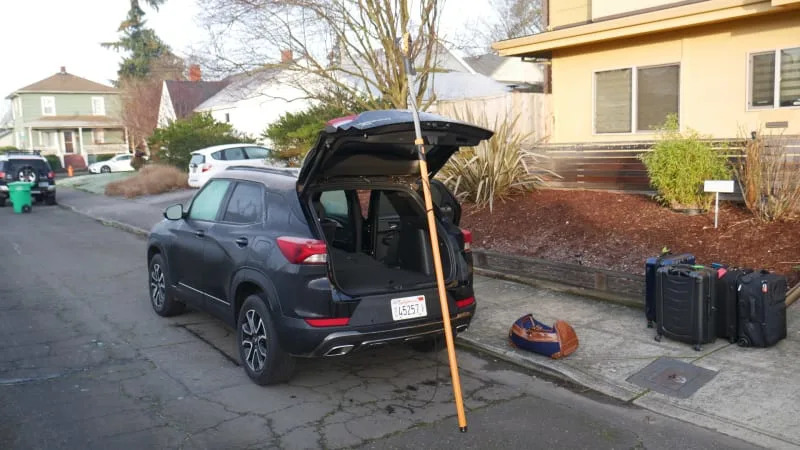
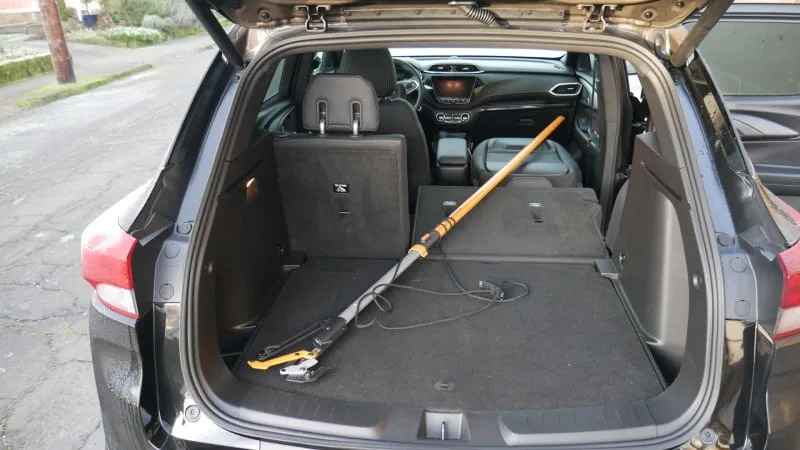
OK, so the Trailblazer lets you do this thanks to its available fold-flat front seat. It has that going for it.
